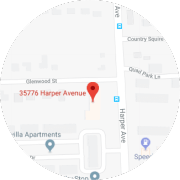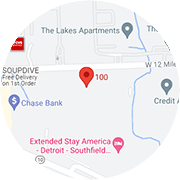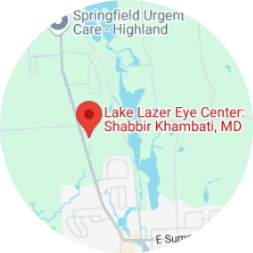
One of the most popular ways to correct vision is with a procedure called LASIK (laser in-situ keratomileusis), which uses a laser to change the curvature of the cornea (outer window of the eye). LASIK has quickly become the procedure of choice for most patients because they recover quickly and have fewer side effects and complications than with other methods of vision correction. In fact, most LASIK patients notice a significant improvement in their vision soon after surgery. LASIK removes tissue within the cornea to treat low to high levels of nearsightedness, farsightedness and astigmatism. Serving the Detroit and surrounding areas with premier LASIK Eye Surgery take our 60 Second Self-Test below!
Take Our 60-second Self-Test to Find Out Which Procedures May Be Ideal For You!
To treat nearsightedness, the steep cornea is made flatter by removing tissue from the center of the cornea. This moves the point of focus from in front of the retina to directly on the retina.
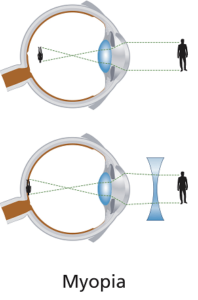
To treat farsightedness, the flat cornea is made steeper by removing tissue outside of the central optical zone of the cornea. This moves the point of focus from behind the retina to directly on the retina.
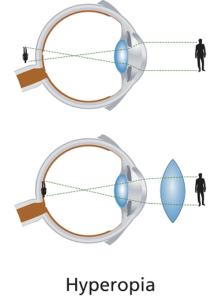
To treat astigmatism, the cornea is made more spherical — like a basketball instead of a football. This eliminates multiple focusing points within the eye and creates one point of focus on the retina. Astigmatism can be treated at the same time as nearsightedness and farsightedness.
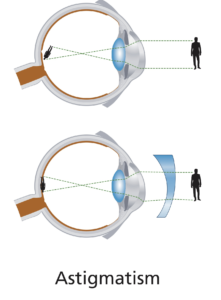
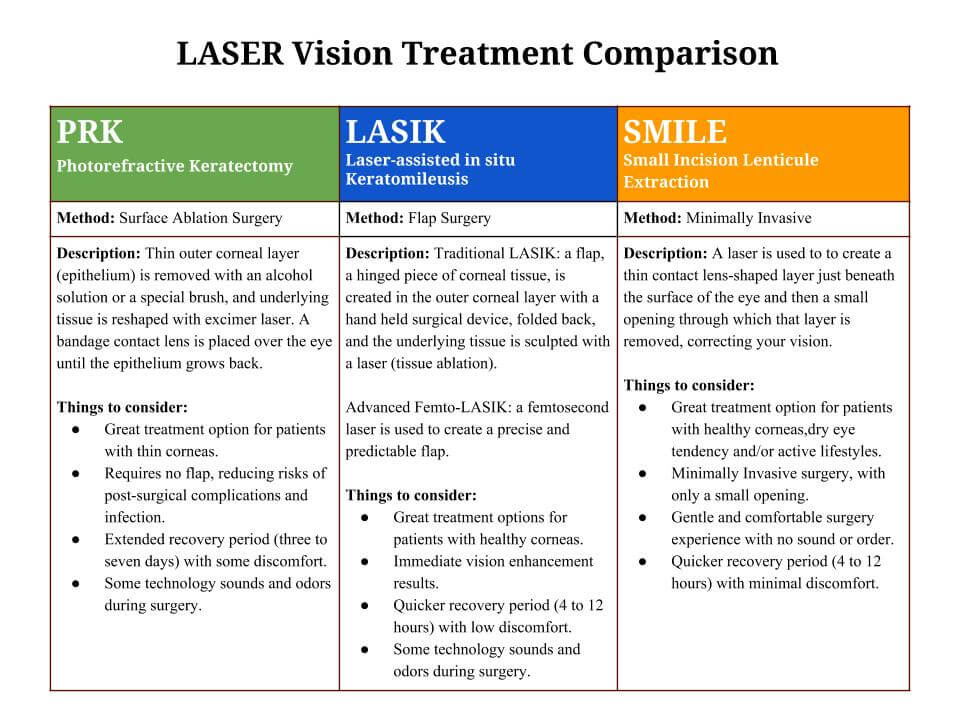
Take Our 60-second Self-Test to Find Out Which Procedures May Be Ideal For You!
LASIK is for Those Who:
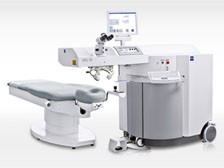
- want to reduce or eliminate their dependence on glasses or contacts
- are at least 18 years of age
- have had a stable eye prescription for at least one year
- have no health issues affecting their eyes
- have no signs of glaucoma or cataracts
What to Expect on LASIK Surgery Day
You will arrive at the laser center about half an hour prior to your procedure. Once you have been checked in you may be offered a sedative to help you relax. You will then be prepared for surgery. The area around your eyes will be cleaned and a sterile drape may be applied around your eye. Anesthetic eye drops will be used to numb your eyes; no injections or needles will be used. When your eye is completely numb, an eyelid holder will be placed between your eyelids to keep you from blinking during the procedure.
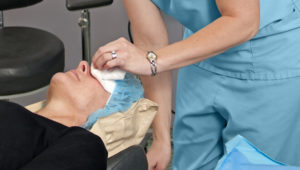
Next, a laser called a Femtosecond laser will create a hinged flap of thin corneal tissue, and your doctor will gently fold the flap out of the way. During this process, you may feel a little pressure, but no pain. You will then be asked to look directly at a target light while the laser reshapes your cornea. The Excimer laser will be programmed with the information gathered in your pre-operative exam. The laser treatment will be completed in less than a minute or two, depending on the amount of correction needed. To finish the procedure, the protective layer will be folded back into place where it will bond without the need for stitches.
Following your procedure, your eye(s) will be examined with a slit lamp microscope. Then you will be given additional eye drops, and your eyes may be shielded for protection. Your vision will probably be a little blurry at first, so someone will need to drive you home. You should relax for the rest of the day. You may experience some discomfort for 12 to 24 hours, but this is usually alleviated with an over-the-counter pain reliever. Some people experience sensitivity to light, and watering or swelling of their eyes for a few days following their procedure.
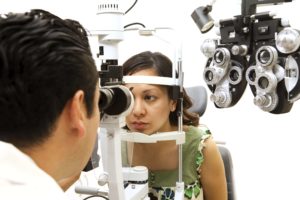
- Vision can fluctuate for up to six months, but most people can see well enough to pass a driver’s license vision exam following their procedure.
- You will be asked to come back the next day for another examination of your eye(s). Most people can actually see well enough to drive the next day but it’s best not to drive until you have been examined. You should be able to resume your normal activities the day after surgery.
Take Our 60-second Self-Test to Find Out Which Procedures May Be Ideal For You!
Realistic LASIK Expectations
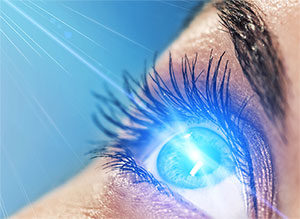
The decision to have LASIK is an important one that only you can make. The goal of any refractive surgical procedure is to reduce your dependence on corrective lenses. However, we cannot guarantee you will have the results you desire. The vast majority of our patients are extremely happy with their vision after LASIK and can do most activities without dependence on corrective lenses.
Serious complications with LASIK are extremely rare. LASIK is a safe, effective and permanent procedure, but like any surgical procedure, it does have some risks. Many of the risks and complications associated with this procedure can be reduced or eliminated through careful patient selection and thorough pre-operative testing using the latest diagnostic technology.
After LASIK, you may experience some visual side effects. These visual side effects are usually mild and diminish over time. But there is a slight chance that some of these side effects won’t go away completely, such as feelings of dryness, glare, and halos.
Since everyone heals somewhat differently, some patients may overreact to the procedure and some may underreact resulting in overcorrections and undercorrections. Once the eye has stabilized (3 to 6 months) you and your doctor can discuss whether a re-treatment could help fine tune your vision if you are over or under corrected.
After a thorough eye exam, you and your doctor will determine if LASIK is an option for you. If you are a good candidate, you will be given additional information about the procedure that will allow you to make an informed decision about whether to proceed. Be sure you have all your questions answered to your satisfaction.
Take Our 60-second Self-Test to Find Out Which Procedures May Be Ideal For You!
Frequently Asked LASIK Questions
What is LASIK surgery?
LASIK vision correction is a simple procedure that uses the cool beam of the eximer laser to gently remove a tiny amount of corneal tissue, usually less than the thickness of a human hair. This changes the curvature of the front of the eye which allows images to be more sharply focused without corrective lenses.
Who is a candidate for LASIK?
You are a candidate for Lasik if your prescription is no more than 14 diopters of Myopia (nearsightedness) or within 6 diopters of Hyperopia (farsightedness) or Astigmatism. This range of prescriptions covers over 99% of the population. Making the majority of people good candidates for the procedure. You must also be at least 18 years of age, and have a stable prescription, and no disease of the eye. People with certain Arthritis diseases or those who take certain medications are not candidates for LASIK. A certain thickness of the cornea is also required.
Why should I choose Lake Lazer Eye Center over other facilities?
Dr. Shabbir Khambati is highly experienced in Michigan LASIK vision correction, having performed over 20,000 LASIK procedures. Dr. Khambati will personally perform all of your preoperative and postoperative examinations as well as your LASIK procedure. Dr. Shabbir Khambati and his highly experienced technical staff use all of the latest technology when evaluating your candidacy for LASIK and performing your procedure.
How do I set up a LASIK consultation?
You may set up a consultation by calling us at 586-792-3891 or Scheduling a free consultation.
Is the LASIK procedure painful?
No, the procedure is not painful. But some patients experience a pressure sensation during the first stage of the procedure, this generally, lasts about 5 seconds on average, and most patients don’t remember it after the procedure is done.
Is LASIK permanent?
Yes, for the vast majority of patients, the Lasik procedure is permanent. A small percentage of people require a “touch up” operation or enhancement. Lasik is by far the most “permanent” of all the refractive procedures available to date.
This is one of the commonest fears regarding LASIK. None of my patients have ever lost their vision from LASIK. The risk of serious visual loss from LASIK statistically is 1 in 5,000 to 1 in 10,000 patients.
When can I get back to my usual activities after LASIK Surgery?
The majority of people return to normal activities within 24 hours. Some may take 48 to 72 hours but those are usually people with high prescriptions. Most patients drive to the office the next day.
How long does the LASIK procedure take?
Less than 15 minutes per eye. Your entire stay at the facility to have LASIK will be less than an hour.
Are both eyes done at the same time during LASIK?
Yes. Since we know immediately after performing LASIK on the first eye that the procedure has been successful, we feel confident that we can proceed to the second eye immediately.
Can anything be done to correct my reading vision?
People in their mid-40’s and older who have good distance vision in both eyes require reading glasses for near tasks due to a normal aging process in the eye called presbyopia. Presbyopia occurs as the lens inside the eye becomes less flexible with age, causing difficulty focusing up close. Blended Vision LASIK is a procedure some patients choose which adjusts one eye for distance and the other eye for reading. Dr. Shabbir Khambati and his technical staff will present this option to you if you are over 45 and are interested in being glasses-free for both distance and near vision.
Can I have LASIK if I am pregnant or breastfeeding?
LASIK is not recommended if you are pregnant due to fluctuations in the prescription. However, it is possible to have LASIK if you are breastfeeding.
Take Our 60-second Self-Test to Find Out Which Procedures May Be Ideal For You!

 586-792-3891
586-792-3891 

